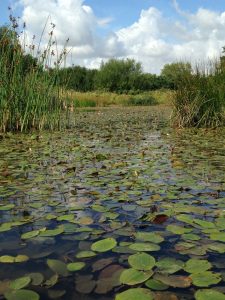Worldwide Decline of Insects
28th February 2019
New research featured by the Guardian got a lot of attention, suggesting alarming declines in insect populations, leading to a “catastrophic collapse of nature’s ecosystems”

Freshwater Habitats Trust is deeply concerned about this and in particular the loss of biodiversity from freshwaters, but we are optimistic. Our work – like the Million Ponds Project, the Pillwort and Mud Snail in Yorkshire project, our latest Water Friendly Farming research about to be published, and the creation of high quality ponds in clean catchments – suggests it’s not all doom and gloom. We can halt this decline.
Collectively, we know quite a lot about what works, and we must be more realistic about what doesn’t. Now we need to scale up, and deliver clean water, high quality freshwater habitats, and targeted species conservation measures much more widely.
Steps we can take
- Convert what we know about how ecosystems work into policy and law that will drive real change in land and water management. For example, its increasingly clear that, globally, small waters are vital for freshwater biodiversity but they barely figure in high level policy.
- Protect the high quality habitats where rare species, and large numbers of species, are still hanging on such as in Flagship Ponds and headwater streams that are still untouched by pollution, clean small lakes, coastal ditch networks, springs and flushes.
- Start a programme of creating new clean water habitats. The key to protecting life in water is freedom from pollution – and in many places the best way to ensure that there is clean water is by starting from scratch with new waterbodies where they are protected from pollution.
- Work from the top of catchments downstream. There are probably thousands of kilometres of unpolluted headwaters in Britain. Starting with these clean and often high quality areas we need to create new clean water by working from the top, extending the unpolluted areas downstream, so ‘protecting and building out’.
- Work out where the best bits of the freshwater environment are, and the most endangered species, whether these waterbodies are small or large, and introduce rigorous measures to get these places into the best condition possible. In too many places we’re settling for the mediocre.
- Make the most of floodplains. Where rivers are polluted, the biggest impact is to be made by restoring floodplains.
- Critically, we must protect the best – in the language of the Water Framework Directive, Good is not good enough – we need to aim for High.
Why are freshwater insects so badly affected?
In the report highlighted in the Guardian, four of the eight groups of insects worst hit were freshwater species – caddisflies, mayflies, dragonflies and stoneflies. Freshwater habitats (rivers, lakes, streams, ponds) are very susceptible to changes in the landscape because water passes through the air and soil, picking up pollutants as it goes, and collects in water bodies where pollutants are often concentrated and their effects amplified. Freshwater habitats are also treated as disposal systems, are frequently drained or filled in, neglected or mismanaged. In England three quarters of rivers are damaged by pollution or abstraction, lakes are probably at their worst ever, and high quality ponds, even in protected areas, are still declining in quality. Protecting freshwater habitats is one of the most difficult parts of environmental management but new approaches, focusing on what really makes a difference now, not in 50 years time, is the way to go.
